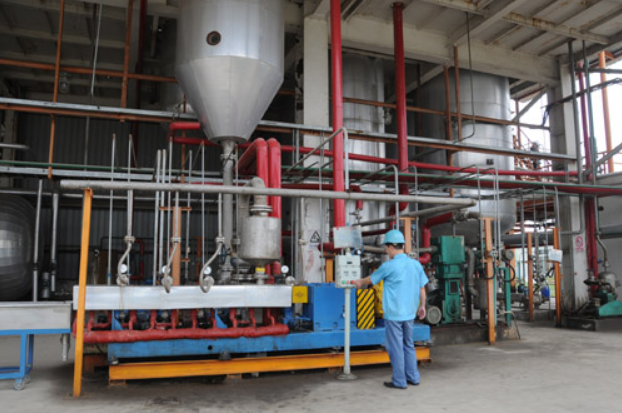PPC is prepared by alternating copolymerization of CO2 and propylene oxide through negative ions, is a biodegradable environment-friendly product with a high-added value and can be completely degraded into water and CO2.
Poly (propylene carbonate) (PPC) is a versatile and environmentally friendly polymer with a wide range of applications. From packaging materials to biomedical devices, PPC has gained attention for its unique properties and sustainable production process. In this article, we will delve into the intricacies of the PPC production process, exploring the key steps and factors that contribute to the creation of this innovative polymer.
Understanding Poly (propylene carbonate) (PPC)
Poly (propylene carbonate) is a thermoplastic polymer that belongs to the carbonate family. It is known for its excellent thermal stability, biodegradability, and resistance to chemicals. PPC is derived from propylene oxide and carbon dioxide through a polycondensation reaction, leading to a polymer with a linear structure. The unique combination of properties makes PPC a promising material for various industries, including packaging, automotive, and medical.
Raw Materials: Propylene Oxide and Carbon Dioxide
The PPC production process begins with the selection of high-quality raw materials: propylene oxide and carbon dioxide. Propylene oxide, a key starting material, undergoes a polycondensation reaction with carbon dioxide to form PPC. The utilization of carbon dioxide as a feedstock contributes to the polymer's eco-friendly profile, as it represents a way to sequester and utilize this greenhouse gas.
The raw materials are carefully sourced to meet stringent quality standards, ensuring the consistency and reliability of the PPC production process. Suppliers play a crucial role in providing these materials to manufacturers involved in PPC production.

Polycondensation Reaction
The heart of the PPC production process lies in the polycondensation reaction. This chemical process involves the reaction of propylene oxide with carbon dioxide in the presence of a catalyst. The catalyst facilitates the bonding of the monomers, leading to the formation of the PPC polymer chain. The reaction conditions, including temperature and pressure, are carefully controlled to achieve the desired molecular weight and properties of the final PPC product.
Purification and Polymerization
Following the polycondensation reaction, the crude PPC is subjected to purification and polymerization steps. These processes aim to remove any impurities and unreacted monomers, ensuring the purity and quality of the final polymer. Various techniques, such as filtration and distillation, may be employed to achieve the required level of purification.
Polymerization involves further processing of the purified PPC to achieve the desired product specifications. This step may include controlling the polymer's molecular weight, adjusting its physical properties, and incorporating any additives or reinforcements required for specific applications.
Formulation and Product Development
Once the PPC is polymerized and purified, it undergoes formulation for specific applications. Manufacturers can tailor the properties of PPC by blending it with other polymers, additives, or fillers. This flexibility allows for the customization of PPC to meet the diverse requirements of different industries.
The formulated PPC can be used to create a variety of products, such as films, coatings, foams, and injection-molded items. The versatility of PPC makes it a valuable material for a wide range of applications, contributing to its growing popularity in the market.
Environmental Impact and Sustainability
One of the key advantages of PPC is its environmentally friendly production process. The incorporation of carbon dioxide as a raw material not only reduces the reliance on fossil fuels but also helps mitigate the environmental impact of this polymer. PPC is biodegradable, offering a sustainable alternative to traditional petrochemical-based polymers.
Conclusion: Unlocking the Potential of Poly (propylene carbonate) (PPC)
In conclusion, the production process of Poly (propylene carbonate) is a sophisticated series of chemical and physical steps that transform raw materials into a versatile and sustainable polymer. From the careful selection of raw materials to the polycondensation reaction, purification, and formulation, each step contributes to the unique properties and applications of PPC.
For businesses looking to incorporate PPC into their products or those seeking a reliable supplier for raw materials, contacting reputable suppliers is essential. A trusted supplier can ensure the quality and consistency of the raw materials, contributing to the success of PPC production in various industries. Embracing PPC in manufacturing processes not only opens doors to innovative product development but also aligns with the global movement toward more sustainable and eco-friendly materials.
















